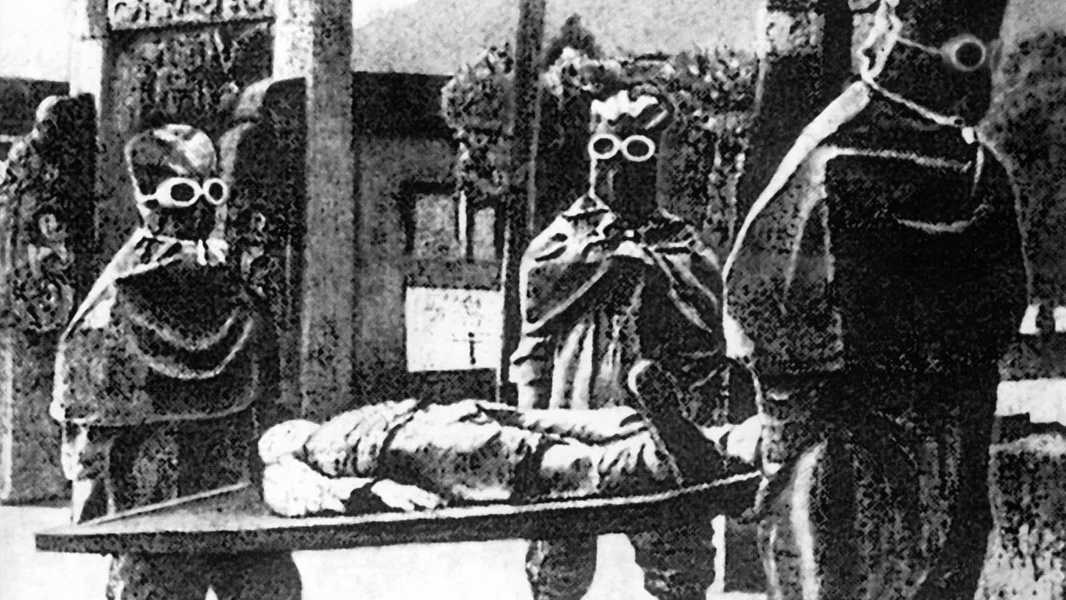
Members of Japan's Unit 731 transport a body from one of the unit's rooms. (Image Credit: History/Universal Images Group via Getty Images)
Archaeologists in China have stumbled upon a hidden underground bunker that was used by Japanese scientists to conduct horrific experiments on people during World War II.
The discovered “horror bunker” located near the city of Anda in northeastern China's Heilongjiang Province was used by the Japanese army's infamous Unit 731 during the Japanese occupation of China from 1931 to 1945.
Built by the Japanese in 1941 and operating until Japan's surrender at the end of World War II, the lab was Unit 731's largest research facility, but its exact location remains unknown to this day. Unit 731 began operations in 1931 as a Japanese public health unit, but soon expanded its research to include gruesome biological and chemical weapons experiments, using Chinese, Korean, Russian, and American captives as test subjects.
Researchers from the Heilongjiang Provincial Institute of Cultural Relics and Archaeology, who excavated the bunker, told the South China Morning Post that its discovery “highlights the continuing legacy of Unit 731's atrocities and their impact on global efforts to prevent biological warfare.”
Up to 12,000 men, women, and children were subjected to Unit 731's sadistic experiments, which included testing grenades, germ bombs, flamethrowers, and chemical weapons. People were also dehydrated, killed in spinning centrifuges, injected with animal blood, X-rayed, vivisected without anesthesia, and placed in low-pressure chambers until their eyeballs burst.
Plague-infected fleas bred in Unit 731's laboratories were also dropped from low-flying aircraft over Chinese cities, causing outbreaks that killed hundreds of thousands of people.
Archaeologists have partially excavated a U-shaped structure about 108 feet (33 meters) long and 67 feet (21 meters) wide, with interconnected rooms and tunnels branching off from it. Since archaeologists have not yet entered the interior, the exact purpose of each room is unclear, but researchers have classified what they believe to be laboratories, observation and dissection rooms, holding cells, barracks, garages, baths, mess halls, and wells.
After Japan's surrender in September 1945, the United States hid evidence of the horrific experiments and secretly granted many of Unit 731's leaders immunity from prosecution for war crimes in exchange for their research. Much of this information was later taken to Fort Detrick in Maryland, the center of the U.S. Cold War biological weapons program from 1943 to 1969.
Archaeologists say they will continue excavating the site, gathering more information about the individual rooms of the structure and how they were connected to form this terrifying bunker.

Ben TurnerNavigate Social LinksSenior Staff Writer
Ben Turner is a UK-based Live Science staff writer. He covers physics and astronomy, as well as other topics such as technology and climate change.
Sourse: www.livescience.com





